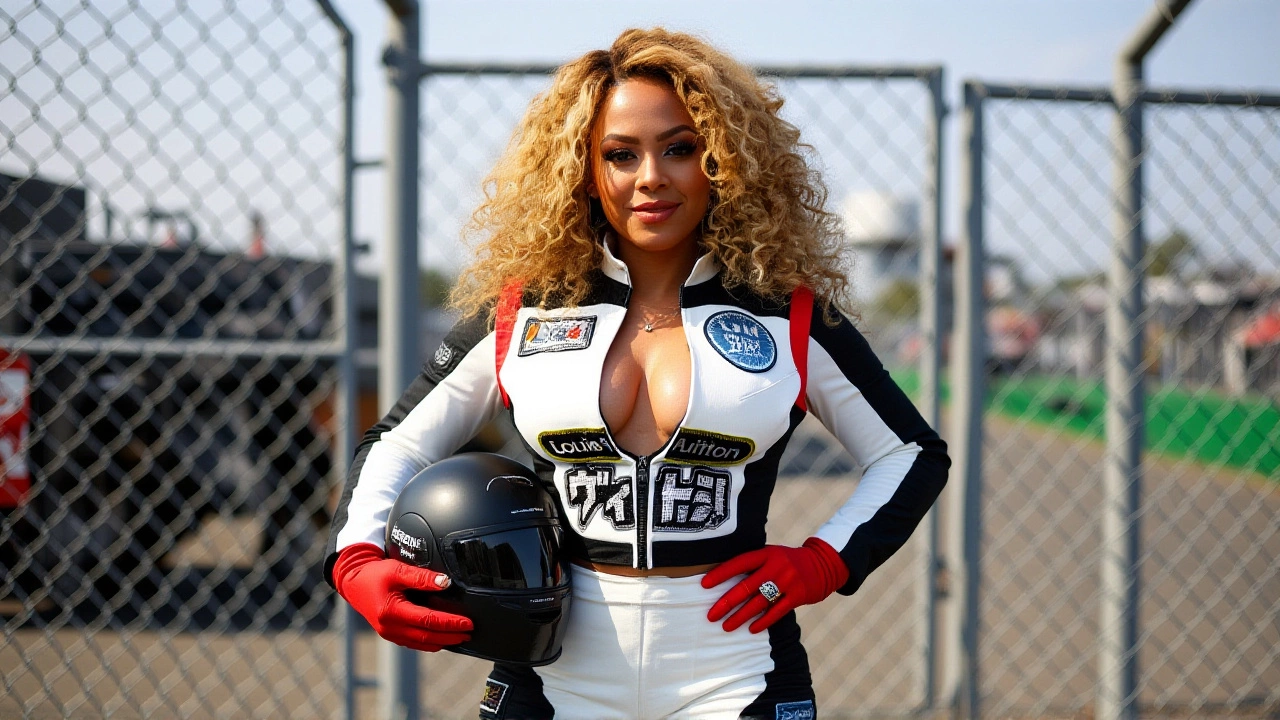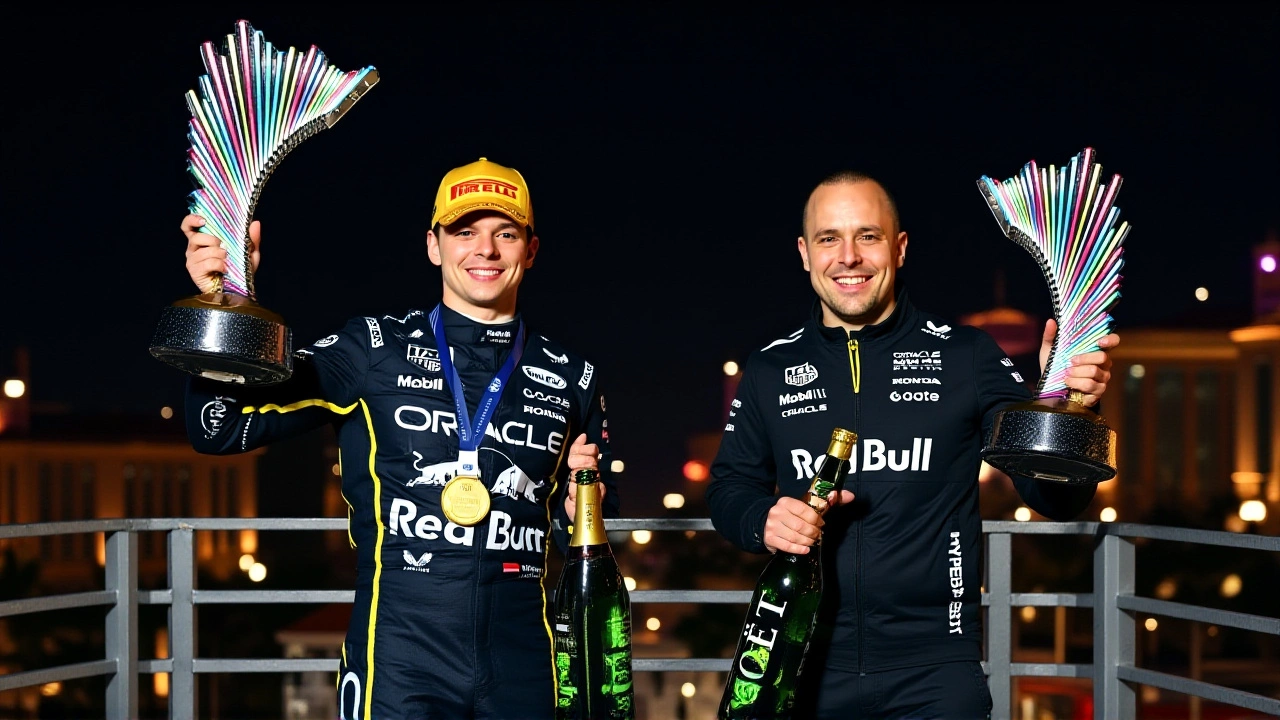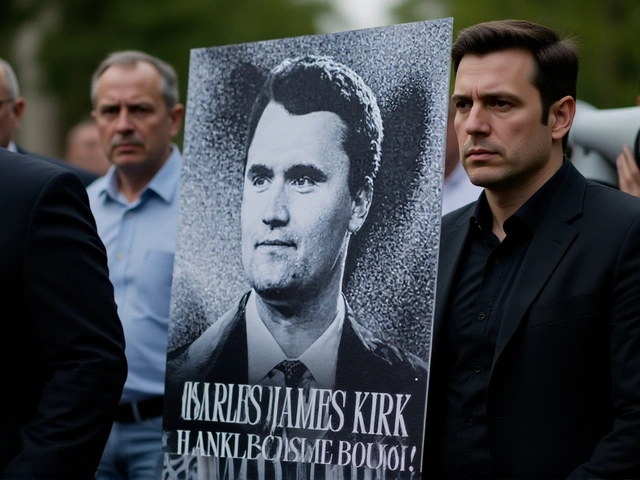Max Verstappen didn’t just win the 2025 Las Vegas Grand Prix—he rewrote its history. On Saturday, November 22, 2025, the 27-year-old Dutch driver for Oracle Red Bull Racing crossed the line 20.741 seconds ahead of the field, the largest winning margin ever recorded on the Las Vegas Strip Circuit. But the real shock came minutes after the checkered flag: both McLaren Formula 1 Team drivers, championship leader Lando Norris and his teammate Oscar Piastri, were disqualified for excessive plank wear—a technical violation that turned a podium finish into a scandal. The fallout sent Mercedes-AMG Petronas F1 Team’s George Russell and Lewis Hamilton surging onto the podium, while Verstappen’s win kept his faint title hopes alive—barely.
The Race That Changed Everything
The 50-lap race began at 10:00 PM UTC under the neon glow of the Strip, with Norris starting from pole. But the opening lap turned chaotic. Norris overcooked Turn 1, allowing Verstappen to dive down the inside and seize the lead before the first corner even cleared. From there, it was a masterclass in control. Verstappen never looked back, managing tire degradation and traffic with cold precision. Meanwhile, Norris and Piastri held second and fourth, respectively, as the field shuffled behind them.
By lap 30, the gap to second place was already over 15 seconds. The only drama came from behind, where Lewis Hamilton—starting from P20 after a qualifying penalty—climbed through the field on hard tires, a gamble that paid off as others faded. Charles Leclerc, starting ninth, charged into sixth, while Carlos Sainz held seventh. But the real story was unfolding in the FIA’s technical inspection room.
The Plank That Broke McLaren’s Championship
After the race, stewards announced that both McLaren cars had exceeded the 1mm minimum thickness limit for their underbody skid blocks—commonly called “planks.” These components are designed to prevent teams from running the car too low to the ground, which generates illegal aerodynamic downforce. Norris’s car measured 0.89mm; Piastri’s, 0.91mm. Both were just under the line—but in F1, under the line is the same as over it.
It wasn’t just a technicality. It was a season-altering error. Norris had led the championship by 38 points before the race. With the DQ, he lost 25 points—dropping to just 13 ahead of Verstappen, who now had a mathematical shot at the title. The disqualification was the first double DQ for plank wear since the 2019 Austrian Grand Prix, and the first time both teammates were penalized in the same race since 2016.
“We didn’t see it coming,” said McLaren team principal Andrea Stella in a post-race briefing. “The plank was within tolerance during pre-race checks. Something changed during the race—perhaps the track surface, the heat, or a subtle suspension issue. We’re reviewing every data point.”
Mercedes’ Unexpected Redemption
For Mercedes-AMG Petronas F1 Team, the result was nothing short of miraculous. George Russell, who had been on course for a hard-fought second place, suddenly found himself on the podium. Lewis Hamilton, who started 20th, earned his first point of the season—and his first top-ten finish since Singapore.
Hamilton, 39, finished seventh on track but was elevated to fifth after the DQ. He finished the race with a smile, then a nod. “I didn’t expect to be here,” he said. “I was just trying to finish without hitting anything. To end up on the podium? That’s the kind of day you remember.”
It was Hamilton’s 197th career podium, tying him with Alain Prost for second all-time. Russell, meanwhile, moved into third in the championship standings, just 11 points behind Norris.

Verstappen’s 125th Podium—And a Glimmer of Hope
For Verstappen, it was his 125th career podium in 231 starts—and his sixth win of the 2025 season. It was also his eighth victory on U.S. soil: four in Austin, two in Miami, and now two in Las Vegas. The win coincided with the 150th Grand Prix for the Red Bull-Honda partnership, a collaboration that began in 2018 and has since delivered six constructors’ titles.
Despite the win, Verstappen remains the underdog. He trails Norris by 13 points with one race left—the Abu Dhabi finale. But with Norris now under pressure and Hamilton and Russell breathing down his neck, the title battle is wide open. “I’m very happy with today,” Verstappen said in his post-race interview. “But I know what’s coming. One race. One chance. That’s all we need.”
The Ripple Effect
The double DQ didn’t just shake the championship—it rattled the entire paddock. Teams are now scrutinizing their own plank wear data with unprecedented intensity. The FIA has reportedly issued a technical bulletin to all teams, reminding them of the 1mm limit and warning of stricter post-race inspections.
For McLaren, the fallout could be severe. With only one race left, their chances of clinching the constructors’ title are now nearly impossible. They lead Ferrari by 28 points, but with Verstappen’s win and Hamilton’s surge, the gap could narrow further.
Meanwhile, Oscar Piastri’s streak of finishing behind Norris—dating back to his win at the Dutch Grand Prix in August—remains intact. He’s now finished behind his teammate in six consecutive races. The team dynamic is under increasing scrutiny.

What’s Next? The Abu Dhabi Decider
The 2025 Formula 1 season comes down to one race: the Abu Dhabi Grand Prix on November 29, 2025. Norris needs to finish just sixth or better to secure the title, assuming Verstappen wins. But if Verstappen wins and Norris finishes outside the top five, the title goes to the Dutchman. Russell and Hamilton could still play spoiler.
With no rain expected, and the Yas Marina Circuit favoring high-downforce cars, McLaren’s strategy will be simple: avoid mistakes. But after Las Vegas, no one trusts simplicity anymore.
Behind the Scenes: The Plank Explained
The plank—a wooden block mounted beneath the car—isn’t just a technicality. It’s a critical safety and fairness device. If the plank wears too thin, it means the car is running dangerously low, generating illegal aerodynamic grip. Teams have spent millions developing “plank monitoring” systems, but even the best can’t predict how the track surface will degrade during a race.
In Las Vegas, the abrasive asphalt, combined with high ambient temperatures, likely accelerated wear. Teams that ran more aggressive setups—like McLaren—were more vulnerable. Red Bull, known for conservative aerodynamic tuning, barely scratched their plank. Verstappen’s car measured 1.08mm after the race.
It’s a reminder that in F1, margins are microscopic—and consequences are massive.
Frequently Asked Questions
Why were Norris and Piastri disqualified for plank wear?
The FIA requires the underbody skid block (plank) to remain at least 1mm thick after a race to ensure cars aren’t running too low for illegal aerodynamic advantage. Norris’s plank measured 0.89mm, Piastri’s 0.91mm—both below the limit. Even a 0.1mm violation triggers automatic disqualification, regardless of intent or race impact.
How does this affect the 2025 drivers’ championship?
Before the disqualification, Norris led Verstappen by 38 points. After losing 25 points, the gap is now just 13. With only Abu Dhabi remaining, Verstappen can still win the title if he wins and Norris finishes sixth or lower. Russell and Hamilton are now in contention too, making the final race a three-way thriller.
Is this the first time McLaren has been disqualified for plank wear?
No. McLaren was penalized for plank wear in the 2018 Mexican Grand Prix, but never before have both teammates been disqualified in the same race. The last double DQ for plank wear was in Austria 2019, involving Red Bull and Ferrari. This is the most consequential since the 2007 Monaco Grand Prix, when Alonso and Räikkönen were both penalized.
What does this mean for McLaren’s constructors’ title hopes?
McLaren’s lead over Ferrari has shrunk from 28 to 17 points after the DQ. To win the constructors’ title, they now need to outscore Ferrari by at least 18 points in Abu Dhabi. With Verstappen scoring maximum points and Hamilton likely in the top five, it’s nearly impossible. Ferrari is now the favorite for second place.
Why did Verstappen’s win feel so dominant despite the DQ?
Because it was. Verstappen led every lap, controlled the pace, and managed tire wear better than anyone. His 20.741-second margin was the largest in Las Vegas GP history—bigger than his 2023 win by over 10 seconds. The DQ didn’t make his win bigger; it just made the rest of the field look smaller.
Could the FIA have been more lenient?
Technically, no. The FIA’s rules are absolute: below 1mm = DQ. But there’s debate over whether the plank should be measured after the race or during it, since wear can accelerate unpredictably. Some engineers argue for a sliding scale based on track conditions. For now, though, the rules are clear—and unforgiving.







